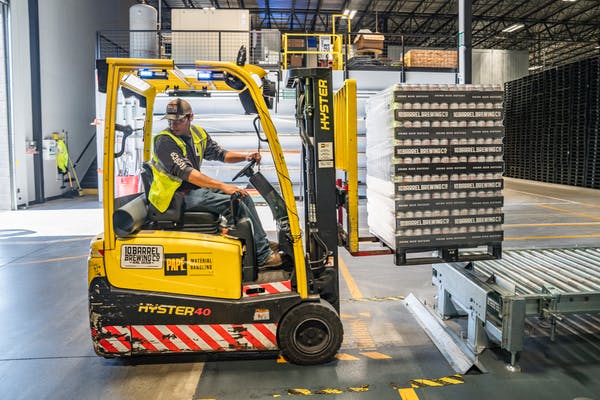Warehouse facilities play a crucial role in the success of any business that deals with physical products. They serve as a storage space for raw materials, finished goods, and other supplies necessary for business operations. Effective warehousing is essential for efficient supply chain management, which, in turn, is critical for meeting customer demands, reducing costs, and increasing profitability.
Warehousing and its role in supply chain management
A warehouse is a central point in the supply chain, acting as a bridge between manufacturers and consumers. Its primary function is to store products until the customer needs them. However, warehousing has evolved to encompass a range of additional parts that are essential for efficient supply chain management.
Functions of a warehouse in supply chain management:
- Product storage
- Order fulfillment
- Transportation management
- Inventory management
- Quality control
- Information management
Benefits of effective warehousing in supply chain management:
- Reduced lead time
- Improved inventory accuracy
- Enhanced customer satisfaction
- Better cost control
- Increased efficiency
Key factors to consider for efficient warehousing:
To achieve efficient warehousing, several factors must be considered. These factors include:
Location of warehouse:
The location of the warehouse is crucial for effective supply chain management. A warehouse should be located in a central location that allows for easy transportation of goods. The proximity to suppliers, customers, and transportation hubs is also essential.
Layout and design:
The layout and design of a warehouse can have a significant impact on efficiency. A well-designed warehouse can optimize the flow of goods, minimize travel time, and reduce the risk of errors. Factors to consider when designing a warehouse include the type of products, the volume of products, and the frequency of movement.
Equipment and technology:
The use of technology and equipment can streamline warehouse operations, reduce labor costs, and improve efficiency. Automated storage and retrieval systems, conveyors, and forklifts are examples of equipment that can optimize warehouse operations.
Workforce management:
Warehouse employees play a vital role in ensuring efficient operations. Proper training, clear communication, and effective management are essential for an engaged and productive workforce.
Challenges in warehousing
While warehousing can provide significant benefits, it also poses several challenges that must be addressed to achieve efficient supply chain management.
Inventory management:
Managing inventory levels can be a complex and challenging task, requiring a careful balance between supply and demand. Accurate forecasting, effective replenishment strategies, and real-time visibility of inventory levels are crucial for effective inventory management.
Cost management:
Warehousing can be a significant expense for businesses, with costs including rent, utilities, equipment, and labor. Managing costs requires careful planning and monitoring of expenses, as well as identifying opportunities to reduce costs without sacrificing quality or efficiency.
Best practices for efficient warehouse management
To achieve efficient warehouse management, businesses should adopt best practices that optimize operations and improve performance.
Lean principles:
Adopting lean principles can reduce waste, increase efficiency, and improve quality. Lean principles focus on eliminating non-value-added activities, optimizing workflow, and continuously improving processes.
Automation and digitalization:
The use of technology and automation can streamline warehouse operations, reduce labor costs, and improve efficiency. Digitalization can also provide real-time visibility of inventory levels, reduce errors, and enhance communication.
Collaboration and communication: Effective collaboration and communication are essential for efficient warehouse facilities for your business management. Clear communication between departments and suppliers can reduce lead times and improve coordination, while collaboration between employees can improve productivity and engagement.



